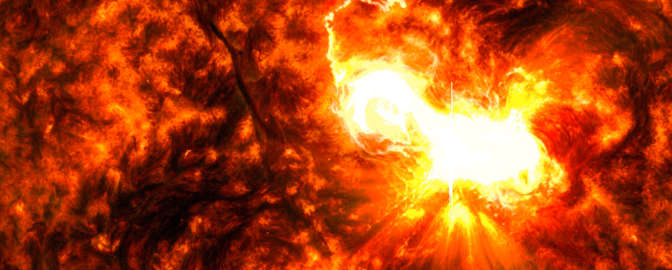Chandrayaan-2
India's Big Step in Lunar Exploration

Written by
Sriram Bhiravarasu
Postdoctoral fellow, Lunar and Planetary Institute
September 18, 2018
Sriram Bhiravarasu is a postdoctoral fellow at the Lunar and Planetary Institute in Houston. He participated in the science planning process for Chandrayaan-2’s radar instrument.
After the phenomenal success of the Chandrayaan-1 orbiter, the Indian Space Research Organisation is gearing up for its second lunar mission, Chandrayaan-2, slated to be launched in January 2019. Developed entirely in India, this mission represents a number of technological firsts for the space agency: the heaviest interplanetary launch mass at about 3,890 kilograms (8,580 pounds), the first Indian soft landing, and the first-ever lunar south pole landing, to name a few. The mission aims to address some of the major scientific questions concerning the Moon by studying its topography, polar volatile deposits, mineralogy, elemental abundance, and exosphere.
Some of the orbiter instruments have significantly improved capabilities compared to their Chandrayaan-1 predecessors. The Imaging Infrared Spectrometer characterizes and maps the abundance of hydroxyl ions (OH-, broken from water molecules) and molecular water. The dual-frequency Synthetic Aperture Radar instrument enables us to look into permanently shadowed crater floors in polar regions and detect water ice. Operating in its passive radiometer mode, this instrument will be able to map lunar regolith thickness and electrical conductivity properties at a global scale. Chandra Atmospheric Composition Explorer 2 is a neutral mass spectrometer that will sample atoms in the tenuous exosphere over polar regions of the Moon, complementary to a similar experiment aboard NASA’s LADEE mission.

The lander, recently named Vikram after Indian space pioneer Vikram Sarabhai, carries a variety of resourceful instruments. The seismometer will record moonquakes near the landing site and might offer clues about the lunar core if big enough quakes happen while it is measuring. A thermal probe will make the first-ever measurements of the vertical temperature and thermal conductivity profile in the lunar soil (up to a depth of 100 millimeters, or 4 inches) near the polar region. The Langmuir probe will study near-surface plasma density variations to understand the Moon’s thin atmosphere. To study how lunar tides affect Earth’s ionosphere, a radio-occultation experiment will measure its total electron content. Measuring the major surface constituent elements at different locations on the Moon is very important, as it could constrain various theoretical models of the Moon’s origin. The rover will attempt this by carrying two instruments for quantitative elemental analysis: an Alpha Particle X-ray Spectrometer and Laser Induced Breakdown Spectroscope.
The current global consensus is that the next steps in addressing major lunar science objectives will be robotic exploration and return of samples from the surface of the Moon, with a particular emphasis on regions not previously visited. Knowing that there is increased international interest in a human presence on the Moon, the timing of Chandrayaan- 2 couldn’t be more perfect!
Earth's First Line of Defense
Support the team of astronomers defending Earth with a gift today.
DonateThe Planetary Report • September Equinox
Help advance space science and exploration! Become a member of The Planetary Society and you'll receive the full PDF and print versions of The Planetary Report.


 Explore Worlds
Explore Worlds Find Life
Find Life Defend Earth
Defend Earth


